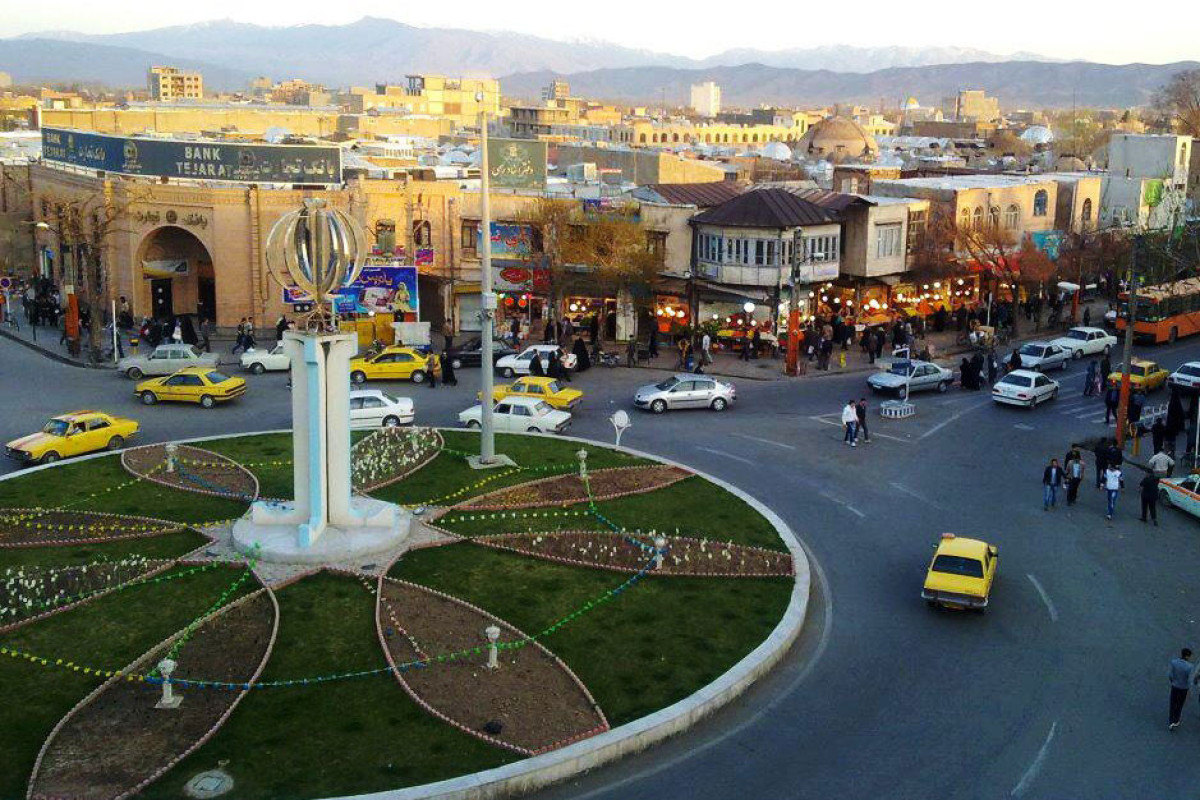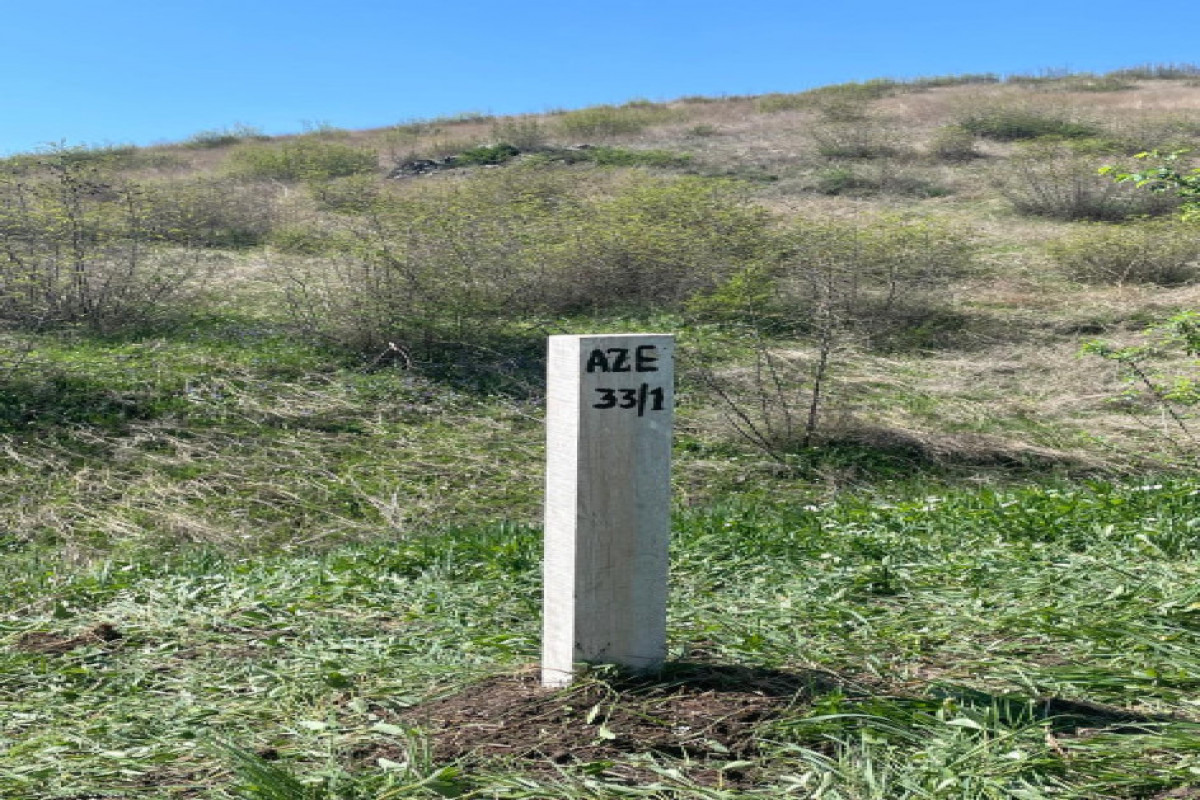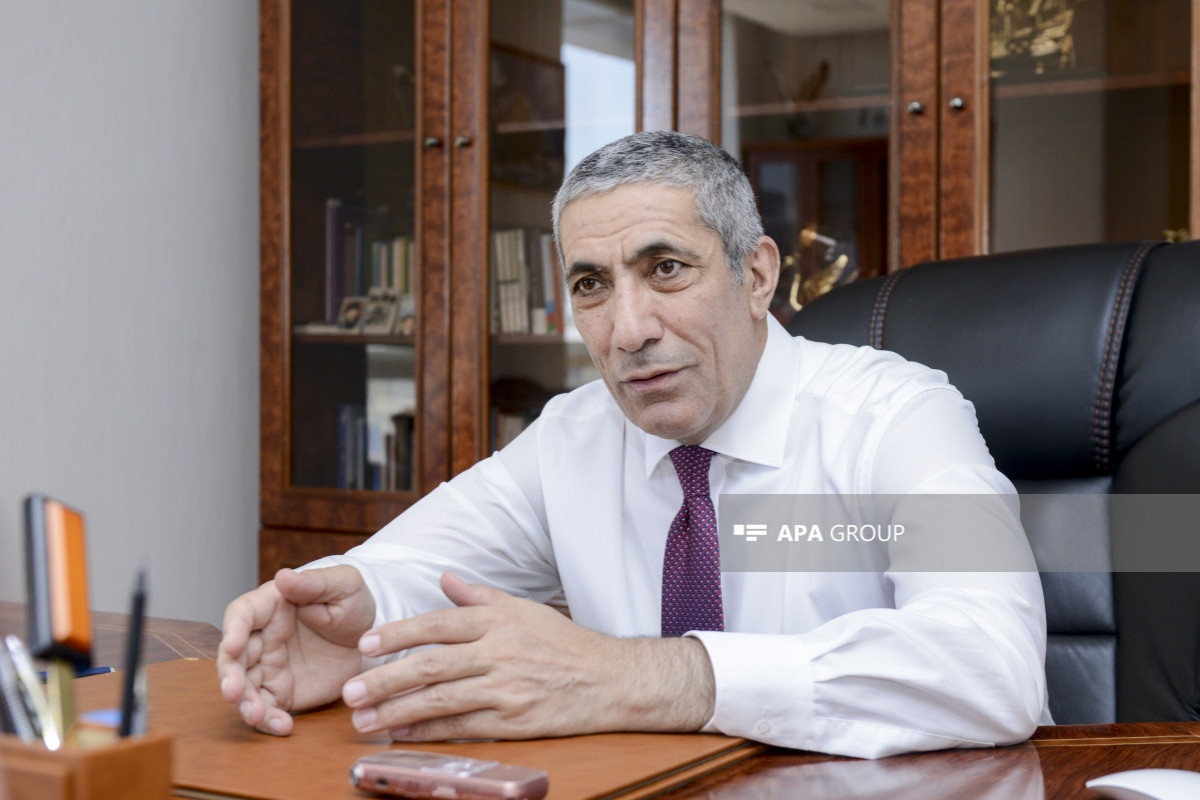APA initiates a new project under the name "Know South Azerbaijan".
The purpose of the project is to provide detailed information about the history, geography, culture, monuments, lifestyle, and everyday life of the people of South Azerbaijan.
Within the framework of this project, APA presents Muhammad Rahmanifar's article about the city of Khoy.
Khoy city
The city of Khoy is the largest and most densely populated settlement after Urmia, which is considered the center of West Azerbaijan Province. It should be noted that according to the country's administrative-territorial division in Iran, the South Azerbaijan region is divided into West Azerbaijan, East Azerbaijan, Ardabil, Zanjan, Alburz, Gazvin, and Hamadan provinces (ostans). The city of Khoy is actually located in the center of Khoy district (sacristan) and is surrounded by smaller towns of this district such as Pere (Firuraq), Dize Diz, Gotur, Zorava, and Evoglu. Khoy city is located on a wide plain surrounded by high mountains, which is why it is also called the "Khoy Hole".
According to the 2017 census, the population of Khoy city is 198,845 people, and the population of Khoy district is 348,664 people. Most of the population of Khoy city speaks Azerbaijani Turkish.
Khoy is considered one of the oldest cities in Azerbaijan. It is likely that Ulkho, mentioned in the sources of the ancient Urartu civilization, was the Khoy city. According to M.I. Diakonov, Khoy, Gotur, and Marand region called "Sangi Butu" was one of the most prosperous and densely populated areas of Urartu state. The discovery of artifacts related to the Urartian civilization in this area is not without reason. Bastam (Basdam/Başdan) fortress, known as one of the strongest fortresses of the Urartu state, is located in this area, which is proof of the glorious ancient history of this region.
Although there have been serious discussions about the origin of the name of the city of Khoy for a long time, the last word has not yet been said on this topic. Iranian historians trying to Persianize the history of South Azerbaijan try to connect its root to the Armenian language because the word Khoy has no meaning in Persian. In general, when Iranian historiography cannot connect the existence of any historical issue with the past of Persians, they always try to attribute it to Armenians or Kurds in order to deny the historical existence of Azerbaijani Turks. However, the Armenians themselves recorded this city as "Hir" and not as Khoy in their historical sources. It can be said that all toponyms of the region, including mountain, river, plain, and village names, without exception, are in Azerbaijani Turkish.
In our opinion, even if we want to find the meaning of the name Khoy, first of all, it is necessary to study this name based on the Urartian language.
Khoy's location on the Silk Road gave this city a special historical and economic status. Many travelers and geographers such as Ibn Hovgal, Naser Khosrov and Hamdullah Mostofi mentioned the beauty and progress of this city in their works. Ibn Hawqal writes about the people of Khoy: "The mild and favorable climate of this city has produced gentle people who are brave and fearless in times of need."
And Hamdullah Mostofi writes: "Its people are white-faced and Khatai-clad, and therefore Khoy is called the Turkestan of Iran."
Khagani, one of the most famous poets of Azerbaijan, wrote in one of his Persian poems, "Though the Qibla is one, think of Khagani/Ray and Khoy as a rotating Qibla!"
Before the Battle of Khoy Malazgird, it was the headquarters of the Seljuk Sultan Alp Arslan's army, and in fact, Sultan Alp Arslan marched from this point to Malazgird to fight the Roman emperor. Although the city of Khoy played an important role in all historical periods, its importance doubled during the Safavid era. According to historical documents, the city of Khoy was the summer residence of Shah Ismail Khatai. It is even claimed that the horns that decorate the minaret in the tomb of Shams Tabriz in this city are the horns of the rams that Shah Ismail hunted in Khoy. We have nothing to do with whether this story is true or false, but in any case, we know that the city of Khoy is located near Chaldiran and was the center of support for the Safavids in the Battle of Chaldiran. After the defeat of the Safavids in the Battle of Chaldiran, Khoy, like some cities of Azerbaijan, remained in the hands of the Ottoman forces for a while. Of course, since Khoy is located on the border of the Safavid and Ottoman empires, it has been under the control of one or the other several times.
During the long wars between the Qajars and the Russians, this city was the focus of the brave Qajar general Abbas Mirza, and during the said period Abbas Mirza stayed in Khoy many times to manage both state and war affairs, and he was even in this city when he heard the news that the city of Tabriz had fallen into the hands of the Russians. Unfortunately, those wars led to the division of Azerbaijan into two parts.
The poets and artists of Khoy, like the poets and artists of other cities of South Azerbaijan, were the pioneers of the literature of longing or separation. These literary examples, whose main theme is the division of Azerbaijan into two, express the longing of South Azerbaijan for its brothers and sisters in North Azerbaijan.
This spirit of national awakening has increased significantly in recent years and many young people, like their peers from other cities of Azerbaijan, are trying to preserve their Azerbaijaniness, culture, history, and language despite all the obstacles and strictures of the government. In fact, Khoy has always been a moat of freedom and an impregnable fortress for Azerbaijanis. In 1918, when the Armenians, together with the Assyrians, caused bloody disasters in Urmia and Salmas, killing thousands of innocent Azerbaijanis, the Khoys fiercely resisted and prevented Andranik's troops from entering Khoy, inflicting a heavy defeat on the Armenians. It should be noted that when the Armenians besieged the city of Khoy, the Ottoman army was moving towards that city to save Urmia, but when they heard about the siege, they changed their way to the city of Khoy. Meanwhile, the townspeople resisted with the few weapons they had until the Ottomans arrived. With the arrival of the Ottoman army, the people found energy and enthusiasm and defeated Andranik's numerous forces. Even today, loyalists tell some terrorist groups that have their eyes on the territory of Azerbaijan to learn from history. We are the same nation that stopped and crushed Andranik's armed forces with minimal means and weapons.
Historical works of Khoy city
Historical monuments located in different parts of this city not only play the role of tourist attractions but also tell about the ups and downs of the history of this city. The stone gate of the ancient city of Khoy, which the locals call the "Castle Gate", has been a witness and observer of various historical events from the time of the Mongol Elkhans to the present day. Perhaps the last story witnessed by this door before the destruction of the city's historical wall in modern times was the story of Khoy people's resistance against Armenians in 1918. This story was that the gates and city wall prevented Andranik's troops from entering the city.

Khoy has not always been a war city. Rather, as mentioned earlier, the city's location on the Silk Road indicates its commercial background. A relic of the glorious Safavid and Gajar periods, Khoy's covered (covered) bazaar is still considered the city's commercial center. There is also 5 historic caravansary in Khoy Covered Market, which indicate the economic progress of the city in the past.
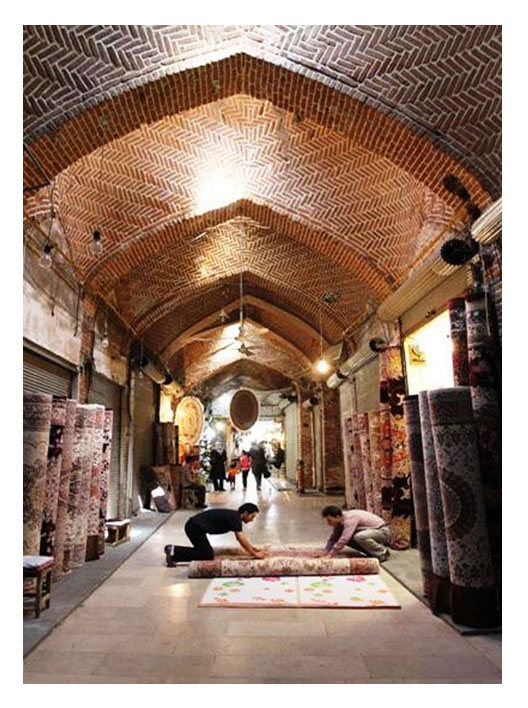
The tomb of the famous Azerbaijani Sufi scholar Shamsi Tabrizi is one of the beautiful historical monuments of Khoy. According to some narrations, when the fanatics around the famous poet Maulana Jalaluddin Rumi rejected Shams Tabriz for the second time, he turned to the city of Khoy and settled here. A minaret decorated with a ram's horns adorns the tomb of this famous Sufi. In some historical documents, the number of these minarets was 3 during the Safavid period, and European tourists who visited this place in the middle of the Qajar period wrote that their number was two. Unfortunately, the hands of nature destroyed two more minarets over time and only one of them has been able to stand until today.
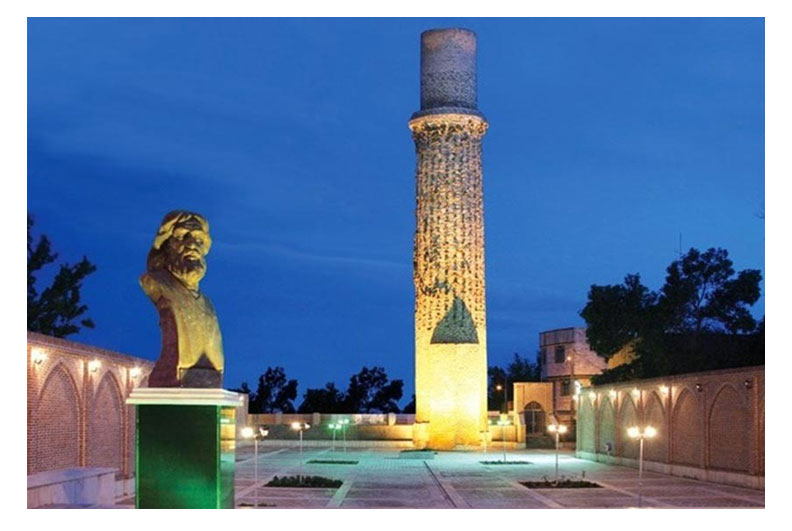
Other notable historical monuments in this city include Khatun Bridge and some mosques and historical buildings. In addition to the natural attractions and mild climate of this city, the presence of numerous historical monuments creates a good basis for attracting tourists to this city, unfortunately, in the current situation, there is no will to do this from the Iranian government.
Customs and traditions
Although the central government of Iran has tried to assimilate the people of South Azerbaijan in the last hundred years, the culture and language of Azerbaijan still live in this city and in other cities of Azerbaijan. Azerbaijani dance and music, performances of Azerbaijani amateurs, performances of ashiqs, bayatis, Azerbaijani mugham, Wednesday ceremonies, Nowruz holiday, counters, kosa, tekamchilar, Chilla night, "Koroglu" saga, and customs, fashion, and traditions, it can be said that Azerbaijan is still this lives in the city.
Symbol of Khoy
Khoy is the center of production of honey, sunflower seeds, roses, and roses. Besides, most of the agricultural products and all kinds of fruits grow in the fields and gardens of this city. Due to the abundance of sunflowers in the fields of this city, the sunflower flower is known as the symbol of Khoy. Even the control tower of this city's airport was designed and built in the shape of a sunflower. In addition to these, along with the Tabriz carpet, Khoy's hand-woven carpets are also famous around the world.
I want to end my article by noting the most important feature of Khoy is that it has young people who preserve Azerbaijani culture, identity, history, and language.
Azerbaijan will live as long as these young people live!


